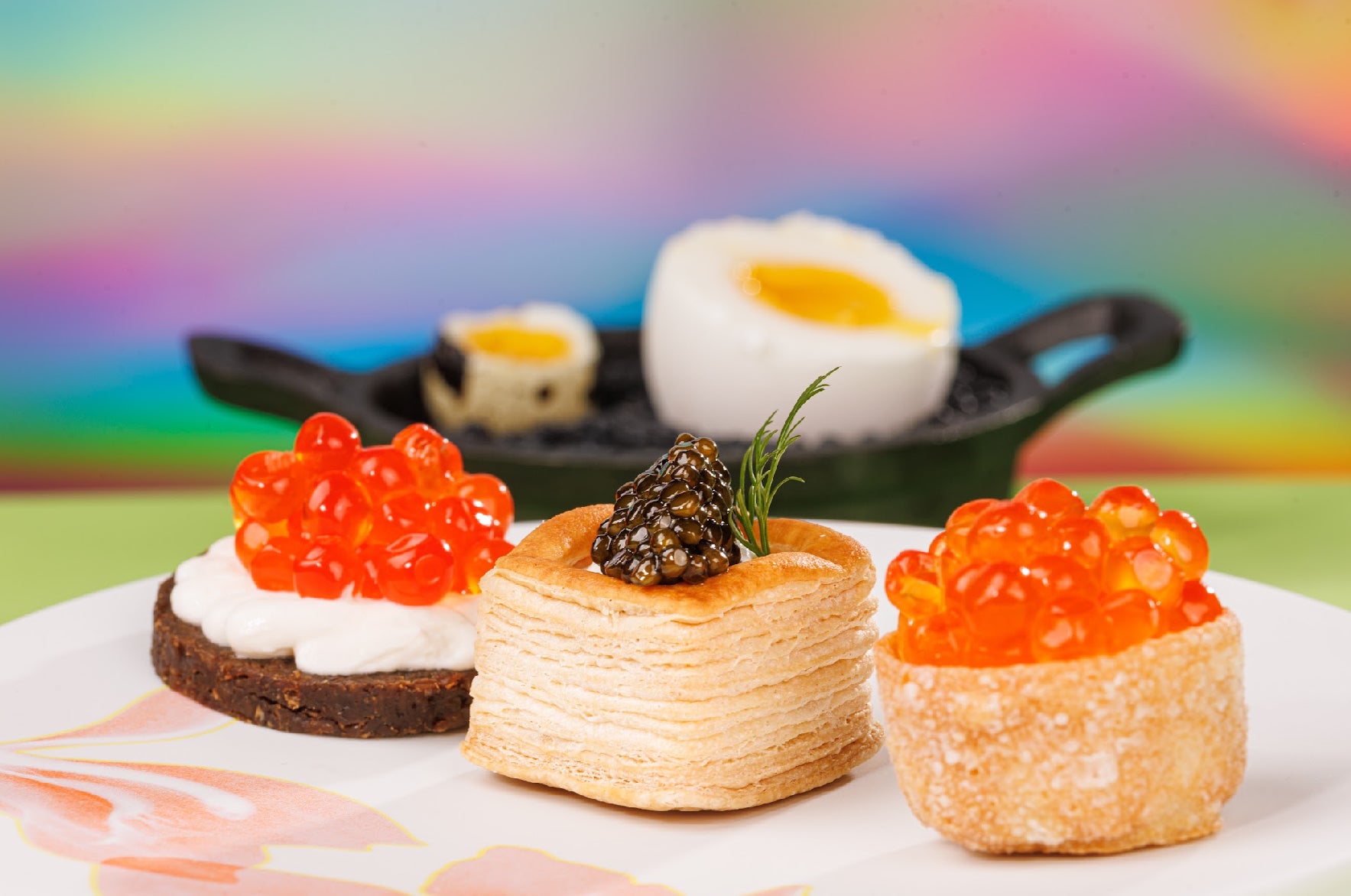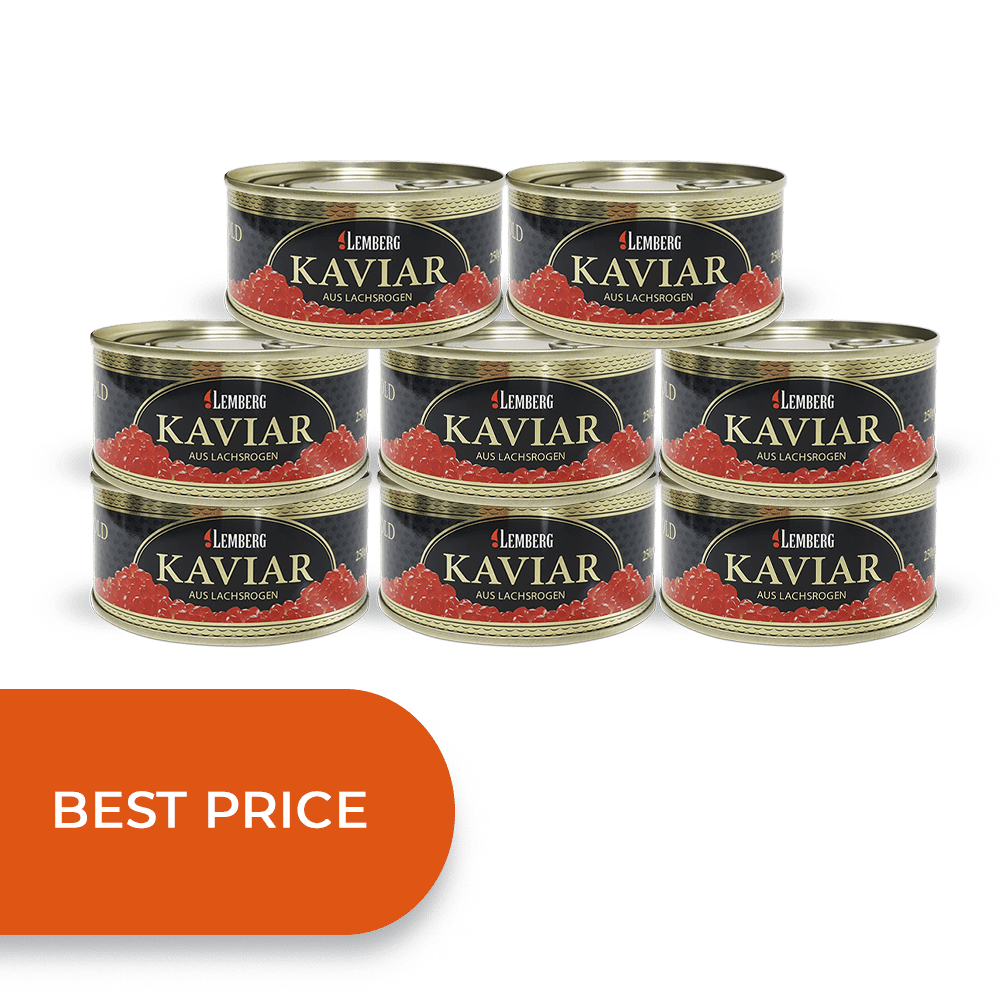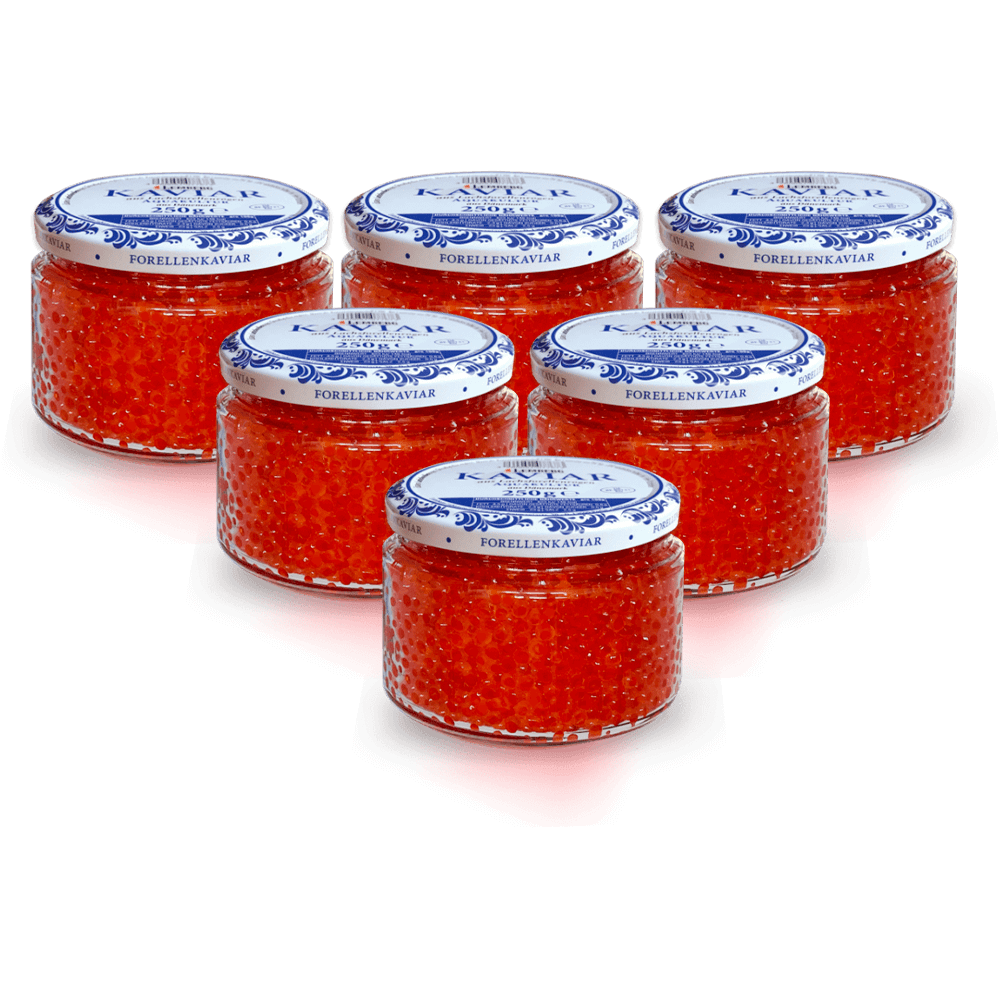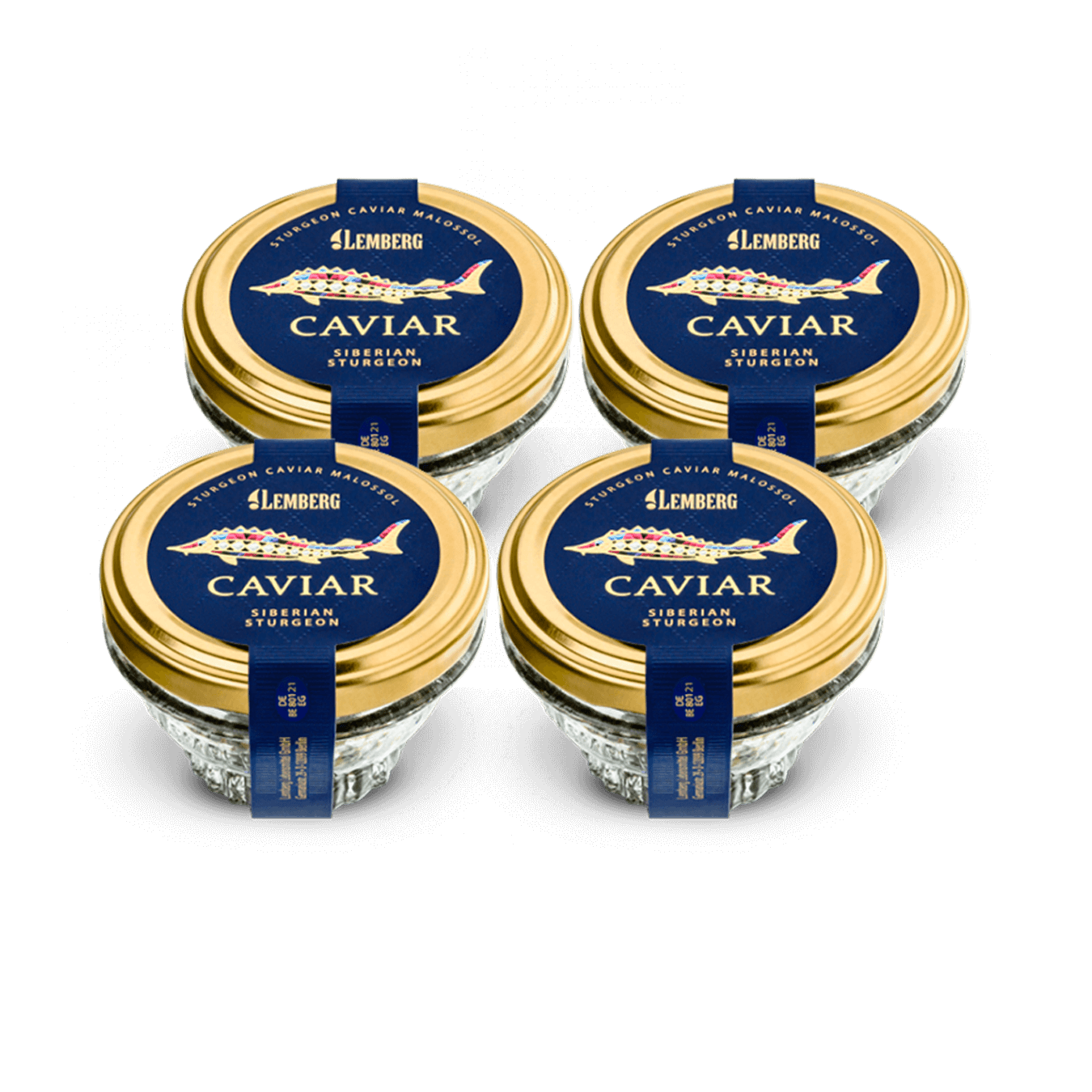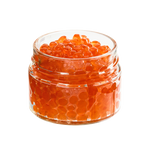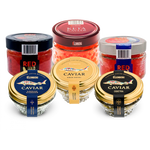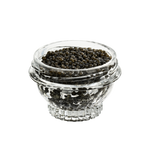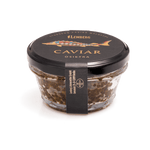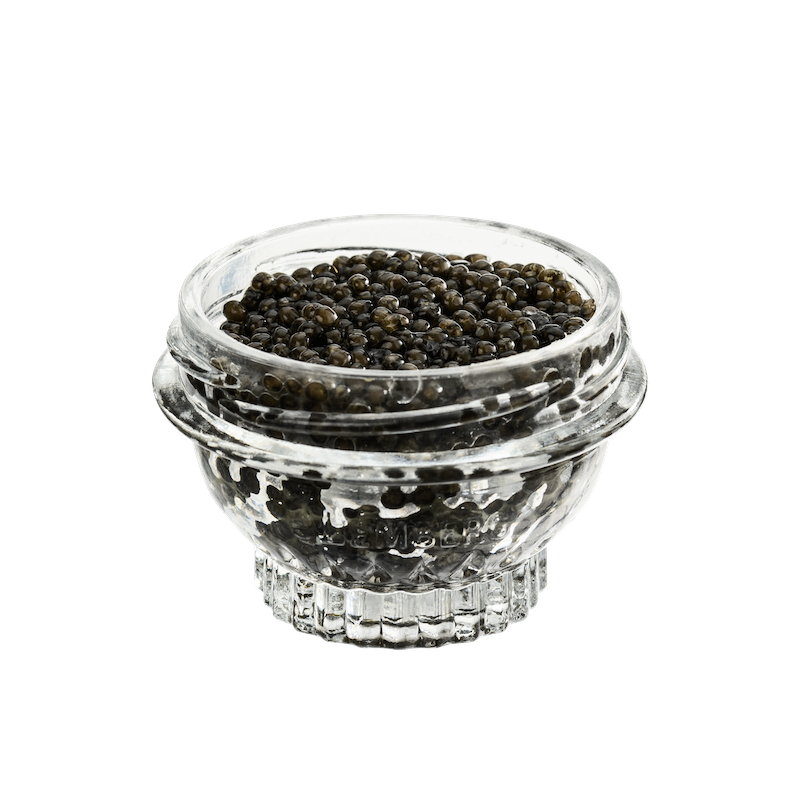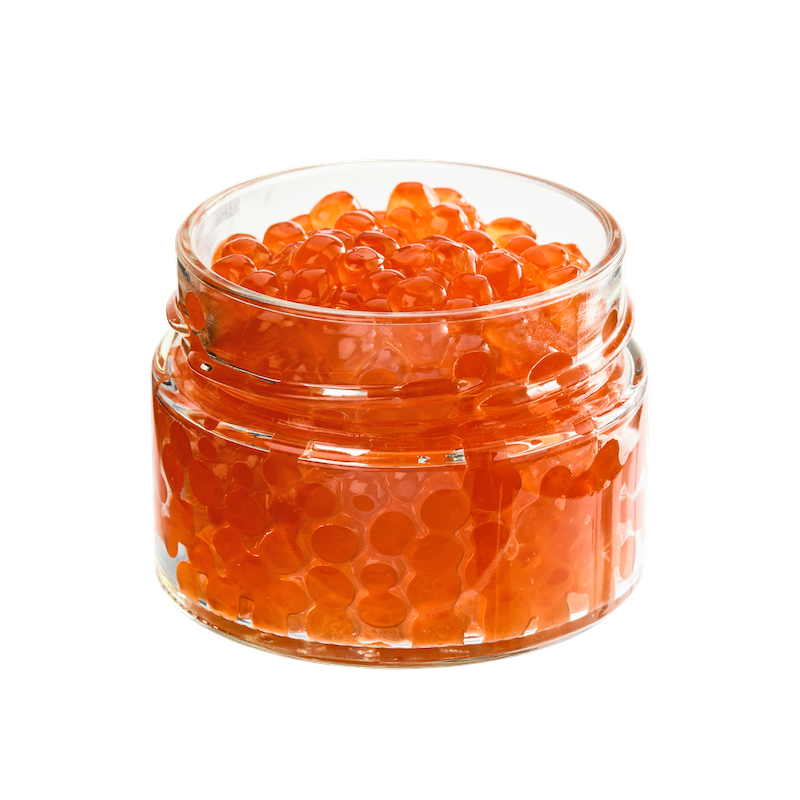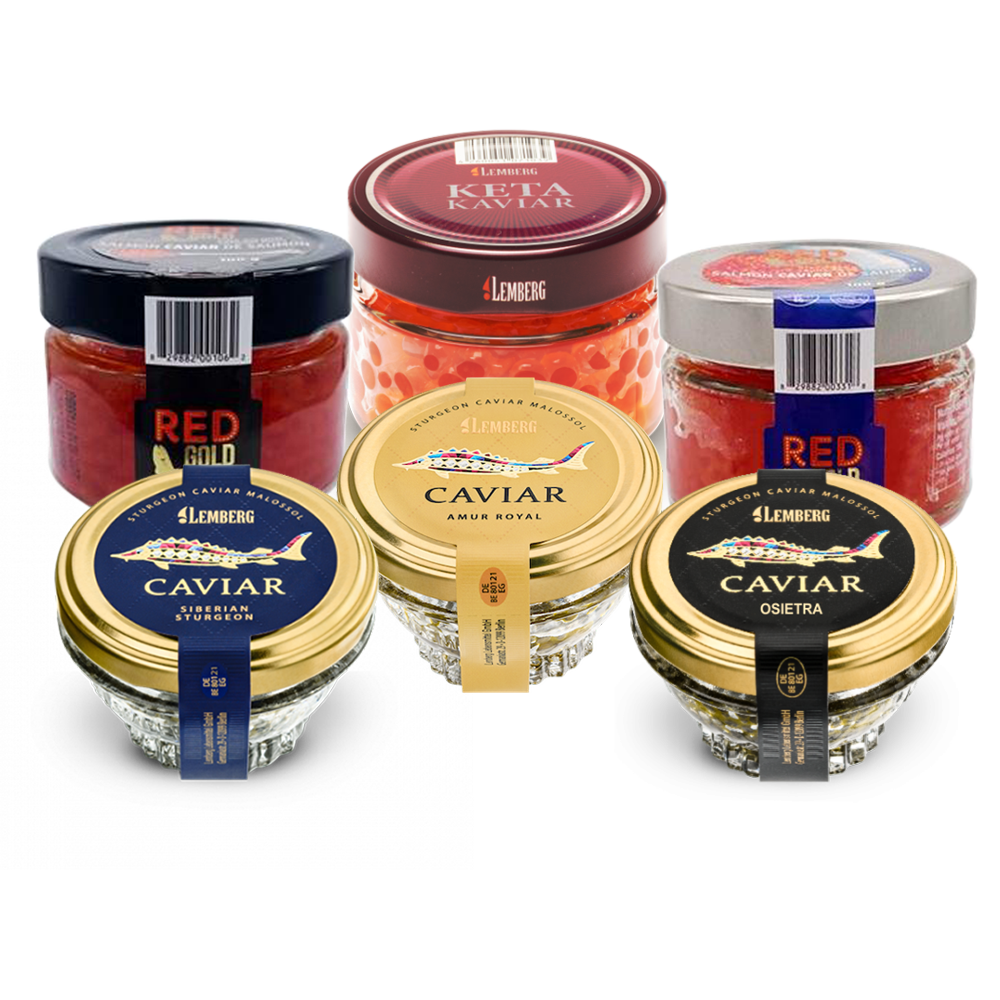Menu

Lemberg Lebensmittel celebrates 20th anniversary
«Caviar is an emotional product»
The name Lemberg stands for a fast-growing company that is celebrating its 20th anniversary this year and claims to offer the widest range of caviar in Europe.
Now that the B2C business has been successfully established, the aim is to grow in the B2B trade as well. In an interview, Managing Director
Ruslan Volny explains why caviar is booming in times of the pandemic.
FischMagazine: Mr. Volny, we are between the Christmas and Easter business. How important are these seasonal highlights for the caviar industry?
Ruslan Volny: The Christmas business, i.e. the last eight to ten weeks of the year, is of vital importance to us. They account for up to 50 percent of annual sales. Easter is also important, though not in the same volume. You can also see this in the number of employees, which triples in the high season. This is due to the manual work on which the caviar business is based – nothing is automated for us. We have been in the caviar trade for 20 years and have expanded our production several times during this time, but every year at Christmas we notice that we need more space for production peaks and are already planning the next expansion.
FischMagazine: You talk about having the widest range of caviar in Europe. Which variants does your house offer?
Volny: As in the caviar trade in general, salmon and sturgeon caviar also play the most important role for us. First, there is the Keta salmon caviar with its large, amber-colored grains, which is one of the most coveted types of caviar of all. The light sea aroma and the mildly salty taste are its typical characteristics. The Gorbuscha salmon caviar is characterised by its excellent taste and tenderness. The golden to orange grains are finer and smaller than those of keta salmon. Sockeye salmon roe, which is characterised by its ruby red color and pleasantly strong taste, is more attractively priced. In addition to salmon caviar, we also offer salmon trout roe, pollack, cod and pike roe, as well as no less than eight different types of sturgeon caviar. Thanks to caviar production through aquaculture, there are now hybrid sturgeon species that not only carry caviar earlier, but also produce new qualities and can also be more attractively priced.

FischMagazine: Please give us an example.
Volny: The 'Amur Royal', for example, is the result of crossing Kaluga (Huso dauricus) with the Amur sturgeon (Acipenser schrenckii). It is our bestseller and so popular because the grain is the size of Beluga caviar and offers very special taste nuances. In terms of price, it is also an attractive alternative to the limited supplies of Beluga caviar.
FischMagazine: How big do you currently estimate the market for farmed sturgeon caviar?
Volny: It's difficult to put an exact figure on it, but in my opinion we're in the range of around 300 tons a year, of which , China and the USA are the main producers. But what I can say for sure is that the consumption of sturgeon caviar has been increasing since 2020, which can also be seen from the rising market prices. Our customers have also ordered 30 percent more sturgeon caviar since the epidemic began.
FischMagazine: What is your explanation for that?
Volny: That came unexpectedly for us and is not that easy to explain. I think the reason is that caviar triggers a feeling of happiness, because caviar is an emotional product. At the same time, caviar is very easy to put on the table in restaurants and at home: you simply open a can and everyone is happy. You treat yourself to something good and that is what people are looking for these days. Caviar is also a very good gift for someone who already has everything. A can of caviar is always welcome there too.

FischMagazine: Where do you get the caviar from?
Volny: We only buy from producers who we know produce consistently good and reliable quality and can meet our requirements. For the salmon caviar, for example, I fly to suppliers in Alaska every year to inspect the goods on site. But we also get goods from Canada and Denmark and have been in direct contact with all suppliers for years. We do not buy from other retailers, only directly from the source.
FischMagazine: Where and how does the actual processing take place?
Volny: The salmon caviar arrives frozen in roe bags and is thawed, washed, salted, sorted, dried, matured and packed here in Berlin. All these steps are done by hand, we only use machines from Japan to remove the caviar from the roe sack. The whole process takes two to three days. We know the average purchase quantities over the year and control production 'just in time'. We do not have a stock of finished products and our customers can rely on getting freshly processed and bottled goods directly from the manufacturer at any time. At the best conditions and without intermediaries.
FischMagazine: Since you are addressing sales: What is the customer structure of Lemberg Lebensmittel?
Volny: We are very strong in direct sales to consumers. In fact, we now sell caviar to 25 countries worldwide and operate four web shops in different regions of the world. Germany as the home market is by far the most important and accounts for around 80 percent of sales. Our delivery target within Europe is a maximum of 48 hours after order processing. Shipping boxes with ice packs inside make it easy to reach the perfect temperature for at least two days. For years we have been working on optimizing our logistics in the individual markets. In regions outside of Europe we work together with specialized distributors.
FischMagazine: So the products from your company are only available via delivery service?
Volny: No, it is not correct. In addition to shipping, we also offer our caviar in three of our own retail shops. Under the name 'Ledo', our company has two full-range supermarkets and a delicatessen in Berlin, where the caviar is offered at the price from our web shop. Of course, our caviar is also available in many restaurants and third party retail shops. And that is also a sales channel that we would like to expand. In simple terms, if we send the caviar to the consumer by post, we can also send it directly to the catering trade without going through the middlemen, which of course has a significant impact on the prices.
FischMagazine: What does that mean specifically? In retail at the consumer level, you can find offer prices of around one euro for a gram of sturgeon caviar during the season.
Volny: That is correct. As a manufacturer, we often offer the caviar at significantly lower prices depending on supply and demand on the world market. We have already carried out sales campaigns with 1kg of sturgeon caviar for 500 euros. We give people the opportunity to test our products, which pays off. Because once you order from us, you often stay and then remember us for the big and small holidays.

FischMagazine: There used to be massive problems with black market products and illegal catches. Is that still an issue today, or can I, as a consumer, rely on everything going right?
Volny: In my opinion, these problems no longer exist today. Every single can has a CITES number that documents the legality of manufacture. When we fill the original cans weighing 1.8 kg into smaller containers in our repacking center, each jar – even if it only contains ten grams – is given a new CITES designation, which is used to pass on all the information From a 10-gram jar labeling, one can determine when and where the caviar was obtained, what type it is, from which farm it came and so on. All this is transparent and understandable.
FischMagazin: Caviar is traditionally offered in jars or cans. What is more popular and what is better?
Volny: The tin packaging is still the most popular because the caviar matures in it and its taste is best retained. The glass packaging doesn't do that to the same extent, but you can see and evaluate the goods. Everyone has to decide for themselves which criterion is more important to them.
FischMagazine: Final question: What is your personal favorite way to eat caviar?
Volny: My favorite is a poached egg with a spoonful of black or red caviar in the still slightly runny yolk. This results in an attractive contrast in color and is sensationally delicious.
What is Caviar? Discover the Delicacy and Its History
The name Lemberg stands for a fast-growing company that is celebrating its 20th anniversary this year and claims to offer the widest range of caviar in Europe.
Now that the B2C business has been successfully established, the aim is to grow in the B2B trade as well. In an interview, Managing Director
Ruslan Volny explains why caviar is booming in times of the pandemic.
FischMagazine: Mr. Volny, we are between the Christmas and Easter business. How important are these seasonal highlights for the caviar industry?
Ruslan Volny: The Christmas business, i.e. the last eight to ten weeks of the year, is of vital importance to us. They account for up to 50 percent of annual sales. Easter is also important, though not in the same volume. You can also see this in the number of employees, which triples in the high season. This is due to the manual work on which the caviar business is based – nothing is automated for us. We have been in the caviar trade for 20 years and have expanded our production several times during this time, but every year at Christmas we notice that we need more space for production peaks and are already planning the next expansion.
FischMagazine: You talk about having the widest range of caviar in Europe. Which variants does your house offer?
Volny: As in the caviar trade in general, salmon and sturgeon caviar also play the most important role for us. First, there is the Keta salmon caviar with its large, amber-colored grains, which is one of the most coveted types of caviar of all. The light sea aroma and the mildly salty taste are its typical characteristics. The Gorbuscha salmon caviar is characterised by its excellent taste and tenderness. The golden to orange grains are finer and smaller than those of keta salmon. Sockeye salmon roe, which is characterised by its ruby red color and pleasantly strong taste, is more attractively priced. In addition to salmon caviar, we also offer salmon trout roe, pollack, cod and pike roe, as well as no less than eight different types of sturgeon caviar. Thanks to caviar production through aquaculture, there are now hybrid sturgeon species that not only carry caviar earlier, but also produce new qualities and can also be more attractively priced.

FischMagazine: Please give us an example.
Volny: The 'Amur Royal', for example, is the result of crossing Kaluga (Huso dauricus) with the Amur sturgeon (Acipenser schrenckii). It is our bestseller and so popular because the grain is the size of Beluga caviar and offers very special taste nuances. In terms of price, it is also an attractive alternative to the limited supplies of Beluga caviar.
FischMagazine: How big do you currently estimate the market for farmed sturgeon caviar?
Volny: It's difficult to put an exact figure on it, but in my opinion we're in the range of around 300 tons a year, of which , China and the USA are the main producers. But what I can say for sure is that the consumption of sturgeon caviar has been increasing since 2020, which can also be seen from the rising market prices. Our customers have also ordered 30 percent more sturgeon caviar since the epidemic began.
FischMagazine: What is your explanation for that?
Volny: That came unexpectedly for us and is not that easy to explain. I think the reason is that caviar triggers a feeling of happiness, because caviar is an emotional product. At the same time, caviar is very easy to put on the table in restaurants and at home: you simply open a can and everyone is happy. You treat yourself to something good and that is what people are looking for these days. Caviar is also a very good gift for someone who already has everything. A can of caviar is always welcome there too.

FischMagazine: Where do you get the caviar from?
Volny: We only buy from producers who we know produce consistently good and reliable quality and can meet our requirements. For the salmon caviar, for example, I fly to suppliers in Alaska every year to inspect the goods on site. But we also get goods from Canada and Denmark and have been in direct contact with all suppliers for years. We do not buy from other retailers, only directly from the source.
FischMagazine: Where and how does the actual processing take place?
Volny: The salmon caviar arrives frozen in roe bags and is thawed, washed, salted, sorted, dried, matured and packed here in Berlin. All these steps are done by hand, we only use machines from Japan to remove the caviar from the roe sack. The whole process takes two to three days. We know the average purchase quantities over the year and control production 'just in time'. We do not have a stock of finished products and our customers can rely on getting freshly processed and bottled goods directly from the manufacturer at any time. At the best conditions and without intermediaries.
FischMagazine: Since you are addressing sales: What is the customer structure of Lemberg Lebensmittel?
Volny: We are very strong in direct sales to consumers. In fact, we now sell caviar to 25 countries worldwide and operate four web shops in different regions of the world. Germany as the home market is by far the most important and accounts for around 80 percent of sales. Our delivery target within Europe is a maximum of 48 hours after order processing. Shipping boxes with ice packs inside make it easy to reach the perfect temperature for at least two days. For years we have been working on optimizing our logistics in the individual markets. In regions outside of Europe we work together with specialized distributors.
FischMagazine: So the products from your company are only available via delivery service?
Volny: No, it is not correct. In addition to shipping, we also offer our caviar in three of our own retail shops. Under the name 'Ledo', our company has two full-range supermarkets and a delicatessen in Berlin, where the caviar is offered at the price from our web shop. Of course, our caviar is also available in many restaurants and third party retail shops. And that is also a sales channel that we would like to expand. In simple terms, if we send the caviar to the consumer by post, we can also send it directly to the catering trade without going through the middlemen, which of course has a significant impact on the prices.
FischMagazine: What does that mean specifically? In retail at the consumer level, you can find offer prices of around one euro for a gram of sturgeon caviar during the season.
Volny: That is correct. As a manufacturer, we often offer the caviar at significantly lower prices depending on supply and demand on the world market. We have already carried out sales campaigns with 1kg of sturgeon caviar for 500 euros. We give people the opportunity to test our products, which pays off. Because once you order from us, you often stay and then remember us for the big and small holidays.

FischMagazine: There used to be massive problems with black market products and illegal catches. Is that still an issue today, or can I, as a consumer, rely on everything going right?
Volny: In my opinion, these problems no longer exist today. Every single can has a CITES number that documents the legality of manufacture. When we fill the original cans weighing 1.8 kg into smaller containers in our repacking center, each jar – even if it only contains ten grams – is given a new CITES designation, which is used to pass on all the information From a 10-gram jar labeling, one can determine when and where the caviar was obtained, what type it is, from which farm it came and so on. All this is transparent and understandable.
FischMagazin: Caviar is traditionally offered in jars or cans. What is more popular and what is better?
Volny: The tin packaging is still the most popular because the caviar matures in it and its taste is best retained. The glass packaging doesn't do that to the same extent, but you can see and evaluate the goods. Everyone has to decide for themselves which criterion is more important to them.
FischMagazine: Final question: What is your personal favorite way to eat caviar?
Volny: My favorite is a poached egg with a spoonful of black or red caviar in the still slightly runny yolk. This results in an attractive contrast in color and is sensationally delicious.
Read more:
What is Caviar? Discover the Delicacy and Its History
What Does Caviar Taste Like: A Guide to the Flavor of This Luxurious Delicacy
Caviar extraction: in detail
How to eat caviar?
- Choosing a selection results in a full page refresh.
